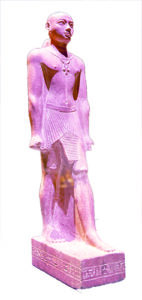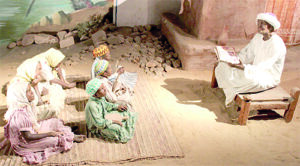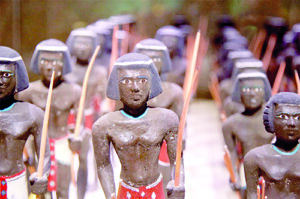Nubia Museum in Aswan houses a large number of pieces that tell the history of Nubia, widely known as the ‘Land of Gold’.
In Hieroglyphics, the word ‘Nubia’ means ‘Land of Gold’. It is a land awash with monumental treasures.
The museum is one of the most important in Egypt, being the first open-air facility in the history-rich country.
It took Egyptians ten years to construct this museum. However, this was not a time lost in vain. The extent of dedication put in the construction of this facility manifests itself in its beauty.
The museum stands as a wonderful model of international cultural cooperation, having brought UNESCO together with the Egyptian government.

On April 6, 1959, Egypt appealed to UNESCO to salvage ancient sites in Nubia. This came in the wake of the inundation by Nile water of the area between Aswan and Sudan, especially after completing the construction of the Aswan Dam.
Unsurprisingly, the operation to save Nubia’s monuments was described as the ‘greatest in history’. It included the relocation of Abu Simbel Temple to another area.
The temple was completely disbanded into 1,036 pieces, 7 to 30 tonnes each. The same pieces were rebuilt on top of the mountain overlooking the genuine spots, drawn by the ancient Egyptians 3,000 years ago.
In January, 1975, the Antiquities Authority submitted another request to UNESCO to preserve the monuments taken from the area, including by establishing a museum.

The museum now displays objects reflecting all aspects of life in the area over centuries.
Nubia Museum is constructed on an area of 50,000 square metres, 7,000 of which are excluded to building, while the rest is designed to be the yard of the museum.
The building has three floors for displaying and housing the different pieces. It also has a library and an information centre.
The largest part of the museum is occupied by the monumental pieces of Nubia. They reflect the different facets of Nubian culture and civilisation.
Pieces exhibited in the museum date back to different eras. Some of them belong to the ancient Egyptian civilisation, others to the Roman era, while a third group of others belong to the Coptic and Islamic eras.
The open-air exhibition includes 90 rare ancient pieces, while the internal halls contain 50 invaluable pieces that date back to pre-history times.
Nubia Museum gained its unique position, thanks to the unique pieces it contains.
These pieces include the statute of Ramses II, which was laid at the forefront of the museum. It also contains the head of the Shpatka which is made of rosy granite, and the head of Tahraqa, the Nubian King whose reign during the 7th century BC was said to be full of prosperity.
There are also four mummies for nobles, which were found in Kashmatkh town in Nubia.

The museum also houses several models and styles of Nubian heritage, the panorama of the Nile, depicting a live image of the River Nile, streaming through its banks.
There is also a model for a Nubian-style house, typically copied to mirror the nature of life in Nubia.
All pieces exhibited in the museum reflect the character of Nubia over history and displays how it merged with the Islamic civilisation, on one hand, and the mother civilisation of Egypt, on the other.
This makes the museum play a vital role, not only at the level of promoting Nubia to the entire world, but also at the level of maintaining monuments and supporting researchers interested in Nubia.






Discussion about this post